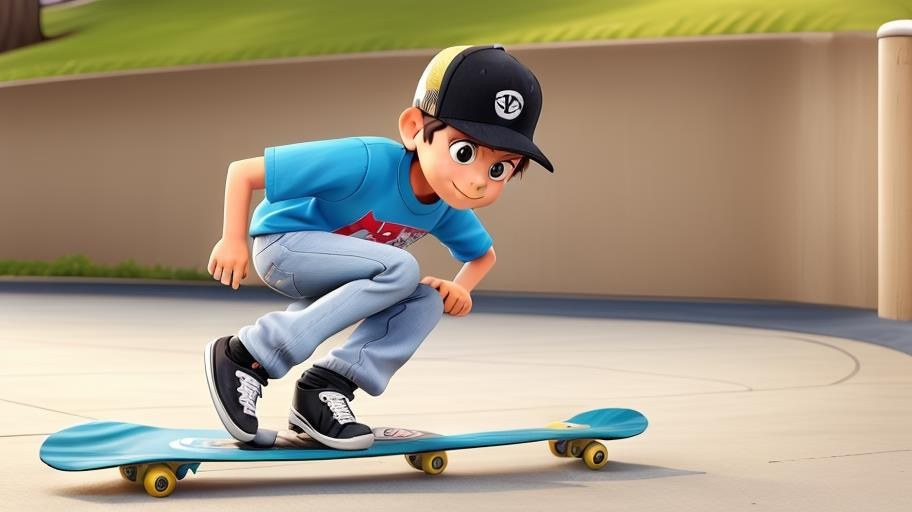What are the types of longboards?
Types of longboards There are various riding styles on longboards. There are no suitable types for longboards. It all depends on what you want to use the longboard for. Types of longboards can be classified by shape and application. Here are all the most popular types of longboards:
Table of Contents
Cruiser longboard
Cruising is the most popular type of longboard, so the choice of cruising longboard is endless. Cruisers Longboards are usually used for cruising and transportation. The Cruiser Longboard is the perfect longboard for going to shops, coffee shops, and workplaces. The Cruiser Longboard is not necessarily limited to one riding style, so it is the best longboard for beginners who want to try their own tastes.
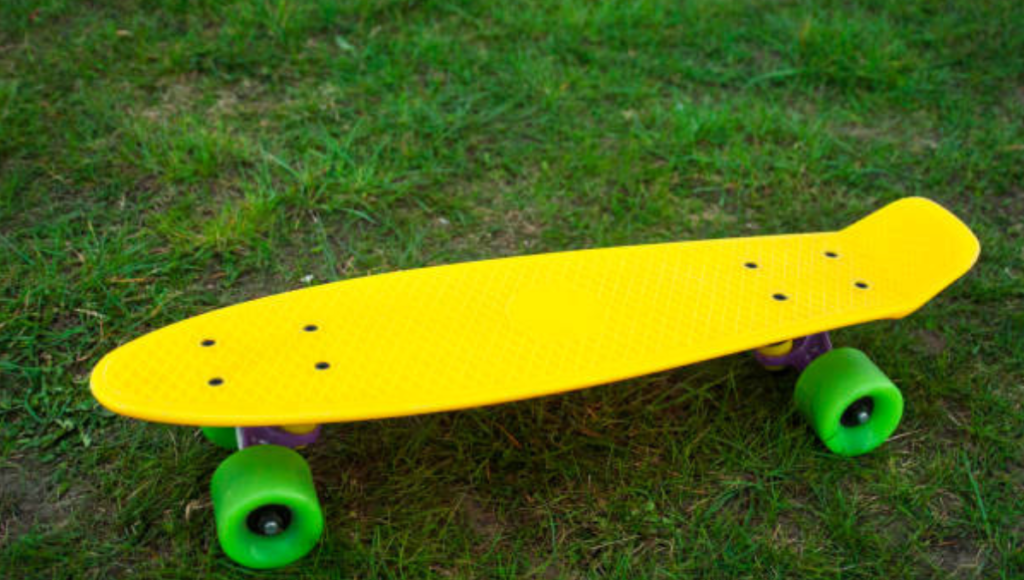
Carving Longboard
Carving a longboard makes you feel like you are surfing or snowboarding. Carving longboards have a top mount type and a drop-through type. To avoid the wire bytes, a wire cutout or a wire well is used. Most carving longboards have a short wheelbase to allow a good turn of reaction. Carving is very fun, even on a slight slope. Cruising and Carving Longboarding can be used to carve through a moderately sloping street, run through a quad to class, or push long distances on flat or slightly sloped areas. People just starting a longboard are likely to have already started this type of riding on their friends’ boards or on their own boards. Click here .
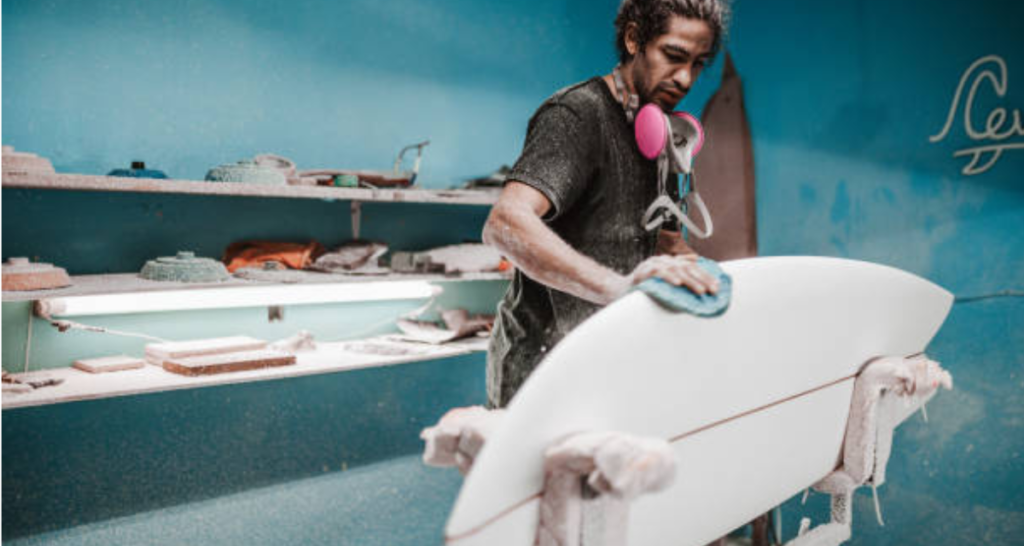
Pintail Longboard
The pintail longboard has a nose and tail. A pintail has a wide nose and a thin tail. The middle of the board is wider, so you can stand without a wire byte. Pintail longboards are ideal for carving and cruising.
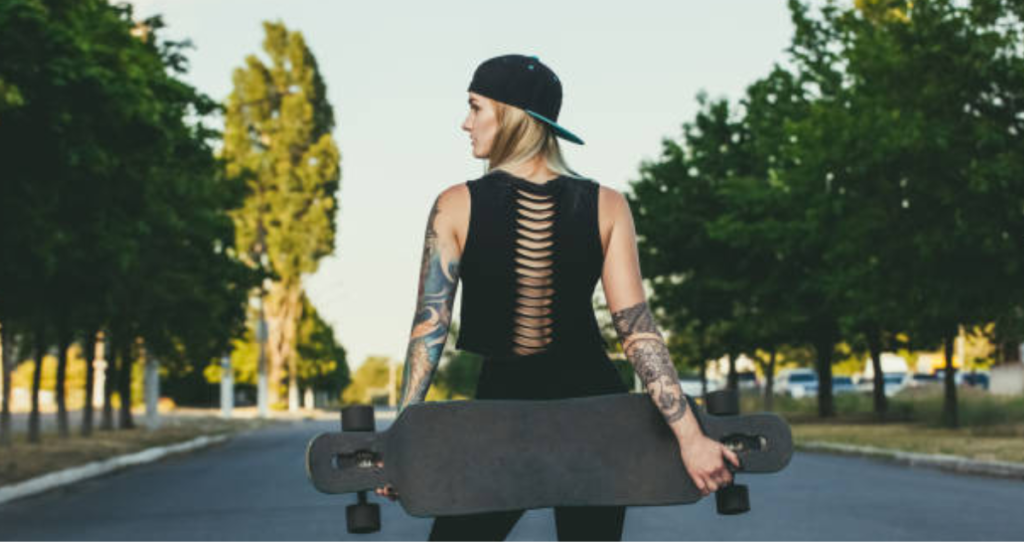
Drop-Through Longboard
The drop-through longboard has a track mount mounted on the board’s deck. This will bring the board closer to the ground and increase its stability. For this reason, drop-through longboards are ideal for downhill longboards.
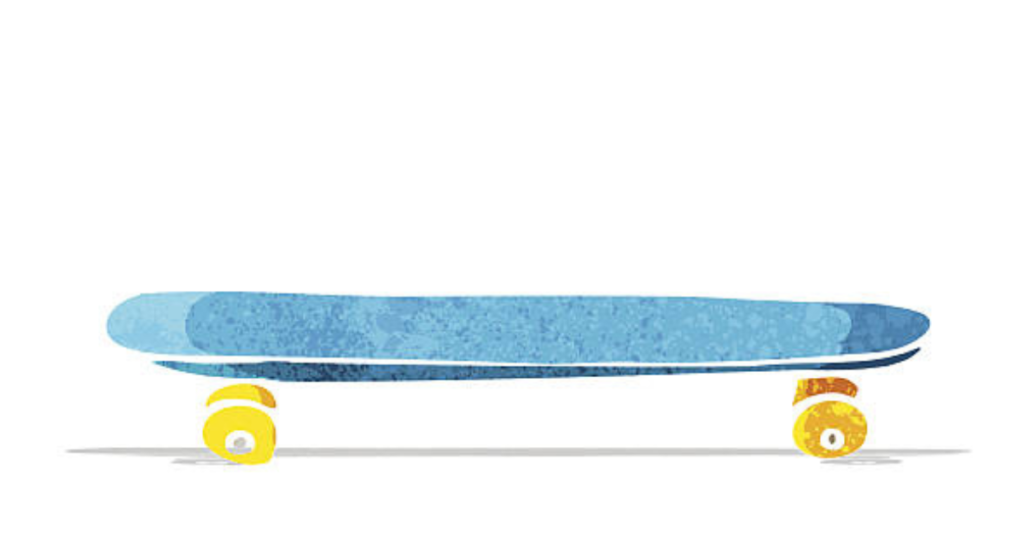
Longboard for downhill
A longboard for downhill is used to go down the slope at high speed. These boards are stable and speedy. Most downhill longboards are drop-through because this type of track mount is the most stable.
Free-Ride Rock Board
Types of longboardsThe freeride longboard is very similar to the downhill longboard. Free-ride The best deck tends to be drop-through because the board is done at high speed. The main difference between the two styles is that the free rider does tricks and slides.
Kicktail Longboard
Kicktail Longboards have an upward-angled lip at the rear end of the board. Kicktail allows you to put your legs in favor of tricks and jumps. Most kicktail longboards are shortened from 30″ to 35″. The Kick Tail longboard is perfect for cruising and parking.
Top Mount Longboard
The top-mounted longboard is a longboard with a truck just below the deck. The top-mounted longboard has high turn performance and is easy to carve. However, the top mount tends to lack stability.
So far, I have introduced a popular longboard. Please take a look at our high-quality longboards.
Directional longboard
These boards advance only in one direction. The most popular directional board design is the famous pin tail, which does not provide the proper board feeling and control when riding the switch. Carvers, cruisers, and downhill boards are usually directional, but exceptions exist.
Twin (symmetrical) longboards
The symmetrical board looks and feels the same. If you’re planning to do a 180° slide (common for freeriding and freestyle), a symmetrical board is recommended.
Longboards have become increasingly popular in recent years.
There are many reasons, but in short, longboards attract many people, regardless of age or skill, to be able to ride them by hand.
Most of the growth of longboards is due to the benefits of commuting.
The wheels of longboards are large and soft, so they roll long and smooth, and the ride is very different from ordinary street boards.
Another big advantage is that longboards are less bulky than bicycles, so that they can be carried by bus, subway, and even during classes.
Other areas that are booming in the sport are downhill and free riding.
The recent development of gears has allowed riders to do things previously considered impossible on longboards.
The more you know about the longboard world, the more you’ll discover a wide range of products that offer a variety of riding experiences.
Try out different setup options.
In the end, you will be making a board quiver. That way, you’ll have the right longboard for you in any terrain.
Types of longboards Enjoy this guide, and do not forget that safety is always the first. Click here
Longboard event
Carving/Cruising/Commuter
Carving and cruising are the most common forms of longboards.
Carving and cruising are the most common styles of longboarding, and people enjoy using longboards as a means of commuting from point A to point B rather than competing on how fast they can run.
The biggest attraction of carving asphalt on a longboard is that you don’t need surfing, snow, or a lift ticket.
I open the door and leave.
Free riding/sliding
Free riding is different from just cruising and carving.
Free riding usually proceeds more slowly than downhill. Free riding allows for flow and style, as well as any type of slide.
The board for freebies is usually set up to make it easy to turn and slide.
It is common to adopt a symmetrical shape for switch riding (to ride the tail downhill and backward) and set up a round lip wheel to help the board slip on its side.
Downhill
A downhill race is to go on the first ride to the bottom of the hill and enjoy it greatly.
You need a deck that is stable even at high speeds and has no deflection. It is also essential to wear all safety gear, not just helmets.
If you are a full-fledged downhiller, you are wearing a full leather suit.
Slalom
Although it is not strictly a longboard, Slalom has established its position in the longboard world.
The reason is simple.
If you like speed and the feeling of precise carving, you’ll enjoy racing between the cones.
The roots of the slalom are in skateboarding, and cutting-edge technology has given birth to a new generation of Cornheads.
What is Top Mount Longboard?
Put the board on the track like a regular skate deck.
The advantage of the top mount is that the rider’s weight and legs are on the wheel.
The advantage of the top mount is that the rider’s weight and feet are on the wheels, so the rider can control the track to the maximum and exert his power.
Recently, a short, compact top mount with a wheelbase has appeared.
The top mount has a grip and functions as a board for downhill racing, but it is also popular for freelancing these days.
Longboard material
Maple
Maple is probably the most common board material because of its availability, price, and durability.
The maple has rigidity and thickness, so you can make a board with a very hard feeling.
Also, the maple board should last a very long time and be able to withstand hard skateboards.
Bambu
Bamboo is becoming a more common board material in the world of longboards.
Bamboo has better flex and elasticity than maple. The bamboo board is excellent in flex, so it is suitable for carving and cruising.
Bamboo is usually used with fiberglass to withstand the stress of skaters and support the board.
Bamboo boards are usually less thick than maple decks, but they are easier to carry when not in use.
Carbon fiber
Carbon fiber is the most expensive option for a long-board composite, but it has many advantages.
The carbon board is very light and usually has a foam core to lighten the weight.
Carbon is usually used to wrap other mediums to increase strength. The lighter the board, the faster the push from the start line and the easier it is to move on the slide.
Carbon fiber is for experienced riders. This is because it takes time to master the board enough to understand the feel of carbon fiber.
Longboard gear and design
Truck
The track on the longboard is very different from the track on the usual street skates.
The longboard track is known as the “reverse-ringing pin” track because the axle is on the opposite side of the kingpin.
Longboard tracks are highly tilted, creating curves with a deep, smooth feel that longboarders desire.
Reverse Pin Tracks are influenced by many factors, so knowing which tracks will fit on which boards and riding styles is key to a proper setup.
Hanger width
There are a few things you need to consider before you can choose which track will fit on which board.
The first is the width of the hanger. The width of the hanger is supposed to match the board’s width.
A deck with a width of 9” or more must have a hanger width of at least 180 mm.
When the hanger width is small, the wheel is easy to contact the board at the time of rapid turning, and it is easy to suddenly stop by the biting of the wheel.
The less wide deck is designed for smaller cruising boards and mini, so even a 150mm track with a sharper turn is fine.
Base Plate Angle
The angle of the base plate also affects how the track bends. The lower the angle of the base plate, the harder the track bends, and the higher the angle, the harder the track bends.
A lower base plate angle makes the track less likely to turn, while a higher angle makes it easier. The 50* base plate is slightly taller than the 40-45* base plate. The 50° base plate is standard for longboards.
The 50-degree base plate is ideal as an all-around base plate, as it is fully rotatable for cruising and remains stable for downhills.
At the same time, the lower the angle, the lower the turn capacity, so the stability is also excellent.
It is perfect for downhill, but if you don’t bend sharply when cruising, the fun of the board will be halved.
Most downhill riders use a 180mm hanger on a 42° or 44° base plate.
Wheel
This is because using the right wheels will change the riding experience a lot.
A durometer is a measurement system that measures the hardness of urethane. The lower the number, the softer the wheel.
The extremely soft wheels grip the road surface well at the time of the turn because of the stickiness of the urethane, but because it is soft, the rolling is somewhat slower, and the slip is worse.
The hard longboard wheel is about 83-86 durometer. These wheels roll quickly, grip force is weak, and chattering when sliding is low.
This is because hard wheels have higher roll speeds and fewer urethane waves when running.
wheel shape
Wheels with rounded edges are typically designed as freeride/sliding-based wheels.
The rounded lip makes it easy to slide horizontally and is what people who are interested in slides and learning slides want.
The rounded lip tends to be unsuitable for racing wheels, as it does not promote grip through the turn because the edges are rounded.
The rounded lip wheel does not require grip force, making it suitable for commuting to work and school.
Wheels with a sharper edge, rather than a smooth round lip, are traditionally designed for maximum grip and lace.
A wheel with a hard lip does not easily cut traction as a slippery wheel.
However, it is not that the wheel of the hard lip does not slip or can not be used for free riding. It’s just hard to get into the slide.
The wheel with a hard lip is perfect for a racer, and you can accurately grasp the model and hardness of your own taste.
Conclusion
Choosing between the various types of longboards can be tricky. Firstly, you must consider what you’ll use the board for. Using the wrong board can lead to injuries, especially if riding at high speed. In order to stay safe while riding, make sure you wear a proper helmet and get a longboard that matches your riding needs.
Choosing a longboard may feel like a challenge, but I really want to help you understand the differences between the board types and the riding styles.
Knowing the type of rider you want to be makes choosing your board type so much easier. The best part is even if you still don’t know exactly what your style is you can always play it safe by getting a simple cruiser board and cruising around until you find out what you enjoy.
I hope I have answered some of the questions you may have had; if not, please ask us in the comments below! We will make sure to answer them.
